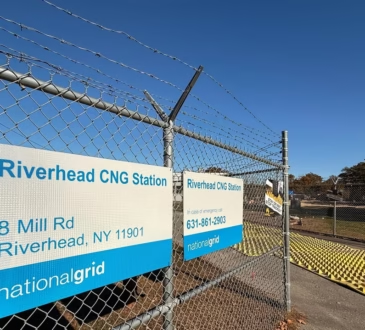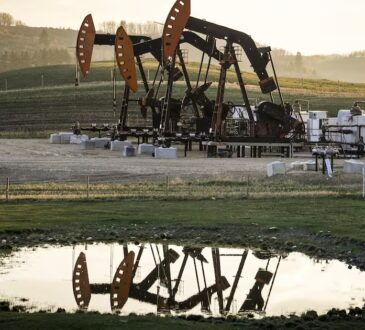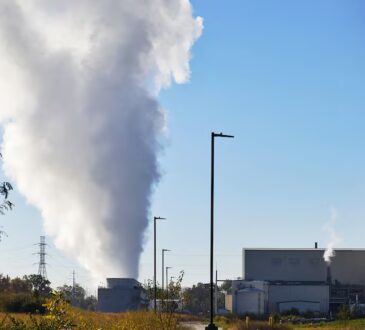The Department of Energy said it was saving taxpayers $7.56 billion. The actual amount is much less
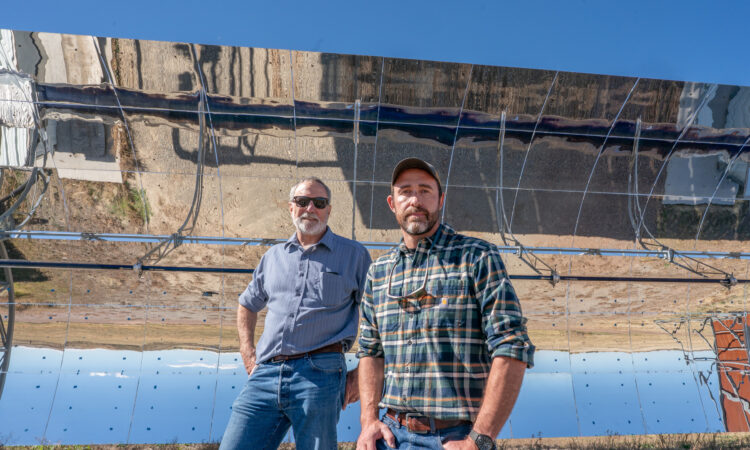
On Oct 1, the first day of the government shutdown, the U.S. Department of Energy said it was canceling more than $7.5 billion in energy projects to save taxpayers’ money.
In termination letters, the agency told several grantees that the projects no longer align with the Trump administration’s pro-energy, especially pro-fossil fuel, approach.
But a review of cut projects reveals that the Trump administration actually eliminated more than $1 billion for fossil fuel research.
The DOE also overstated how much it saved taxpayers, according to an agency list of terminated projects that CPR News matched with publicly available spending estimates.
The data indicate that the DOE actually terminated far less funding — $5.8 billion worth of federal awards, which ranged from money for transmission lines to research on capturing carbon from the atmosphere.
Around $403 million of that money has already been distributed to recipients, further limiting what the government is able to recoup.
In a press release, the department said the 223 projects it terminated “would not provide a positive return on investment of taxpayer dollars,” and did not “expand America’s supply of affordable, reliable and secure energy.”
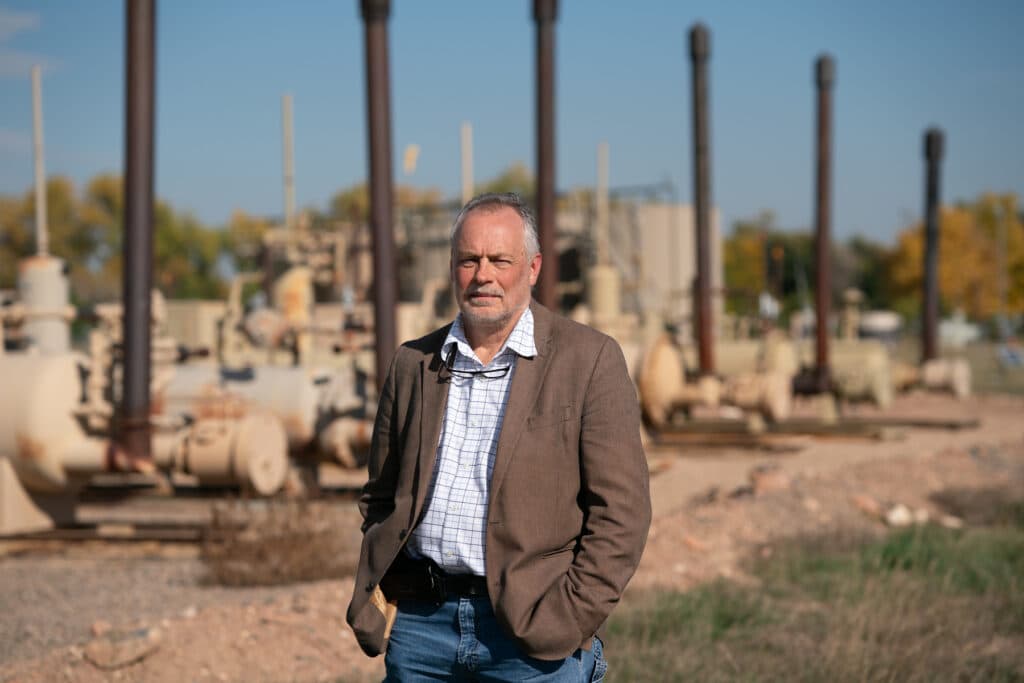
Hart Van Denburg/CPR News
But some recipients said their work supports the Trump administration’s agenda, raising questions about how exactly the DOE picked projects to cut.
Dan Zimmerle’s center at Colorado State University works directly with oil and gas companies to help them reduce methane emissions, a potent greenhouse gas. That has both an environmental benefit but also helps companies detect leaks, sell more natural gas and improve their bottom line.
He said in 14 years of working with the DOE, he’s never had a grant canceled. “Most of the projects we had canceled are quite well-aligned with the administration’s stated objectives,” he said.
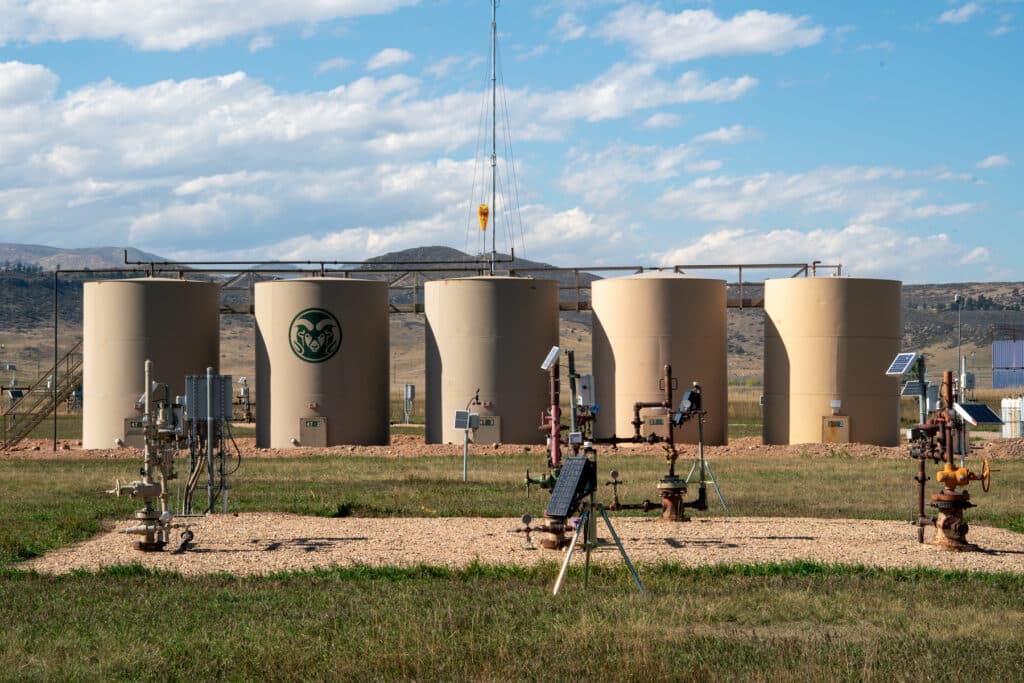
Hart Van Denburg/CPR News
The DOE did not respond to multiple requests for comment about the criteria it used to terminate projects or the discrepancy of the total cuts.
Yale School of the Environment professor Kenneth Gillingham said eliminating such funding is “incredibly disruptive,” and would set the U.S. behind. The government has historically played a major role in funding scientific research, which has led to medical breakthroughs and even the internet.
“Having funding pulled is a death knell to many projects that have real jobs and real people’s lives attached to them,” he said.
“Pulling back on that innovation is just simply short-sighted.”
Some projects received bipartisan funding
In a press release and a TV interview, Energy Secretary Chris Wright said that each project underwent a “thorough, individualized financial review,” and denied the cuts targeted Democratic states.
“Our decisions have been made over the last few months,” he said during a CNN interview. He said a team of advisors evaluated over 2,400 projects on “whether it makes sense for the American taxpayers or not.”
White House budget director Russell Vought was more blunt — he said in a post on X that the projects were part of “Green New Scam” climate initiatives undertaken by Democrats.
But at least 56 terminated grants had already received congressional funding through the 2021 Bipartisan Infrastructure Law, according to grant descriptions. Others received congressional investments from the Inflation Reduction Act, a landmark Biden-era climate law.
Some projects had even been greenlit to continue work by the Trump administration as recently as May, according to publicly available grant updates.
The terminations have caused uncertainty, looming layoffs and confusion in Colorado, where the DOE has marked 34 grants for termination.
In a letter, Colorado’s Democratic congressional delegation has demanded answers from the DOE about why projects were terminated. They have not received an explanation, according to a spokesperson for Sen. Michael Bennet.
A larger group of Democratic and independent U.S. senators also criticized the cuts and said the DOE likely broke the law by terminating contracts that Congress authorized.
“The illegality of your cancellations is the only thing as indisputable as the harm your cancellations will wreak,” they wrote in a letter to Wright and Vought.
Oil and gas projects get the axe
From a metal, springy catwalk, Zimmerle surveyed five large tanks that typically hold fluids collected from oil and gas drilling. The tanks are empty, though, and the wells around them are fake.
“It’s a Hollywood set,” he said, gesturing to an array of equipment that is not being actively used for drilling.
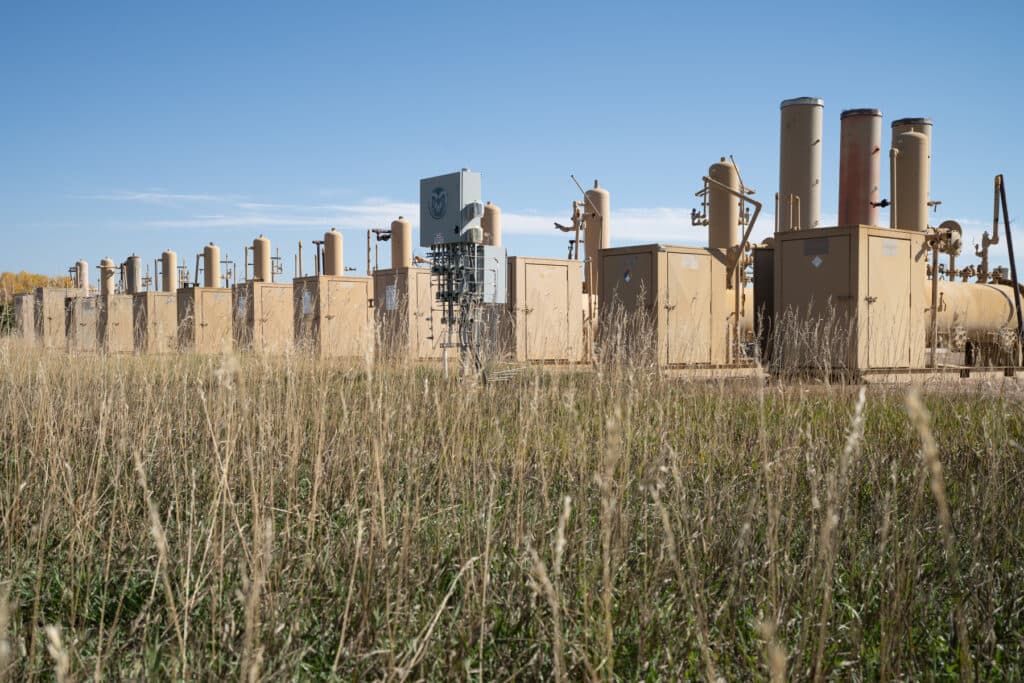
Hart Van Denburg/CPR News
Zimmerle runs the Methane Emissions Technology Evaluation Center (METEC) at Colorado State University. It’s both a research group and the only test facility of its kind in the United States.
The facility allows researchers and oil and gas operators to study advanced ways to detect methane leaks and simulate tests around real equipment.
Part of the center’s funding comes from DOE contracts. The funds support its operations and emissions research. The money also supports oil and gas companies to get technical assistance from the facility.
“We probably work with 40 to 60 operators on any given year, and they’re getting value from that,” Zimmerle said.
In January, the DOE awarded Zimmerle’s group some of the largest grants CSU has ever received. One project, for $299 million, was for equipment and technical and job training for small oil and gas operators, many in Republican-led states.
But in October, the DOE said it canceled several of the center’s grants.
Zimmerle said a termination letter he received indicated his active projects did “not align with agency priorities.”
The Trump administration, though, has been an avid supporter of the oil and gas industry, which has also actively supported Zimmerle’s work.
The Environmental Partnership, a trade group representing U.S. onshore oil and gas companies and run by the American Petroleum Institute, said in a statement that the facility has “played a vital role” in helping companies cut their emissions.
The DOE did not return a request for comment about Zimmerle’s projects.
Greener energy targeted
Around 80 miles south, on a grassy plain a few miles from the Denver airport, Hank Price is doing very different research. He stood in the shadow of a nearly three-story collection of curved mirrors, part of a large, curved solar device dubbed the Sun Beam.
It’s used as part of a technology called Concentrating Solar Power.

Hart Van Denburg/CPR News
Unlike traditional solar panels, the technology uses mirrors to create heat. It then repurposes that heat to create electricity. Solar power plants built using the technology solve a perennial problem: they can generate power even after the sun sets.
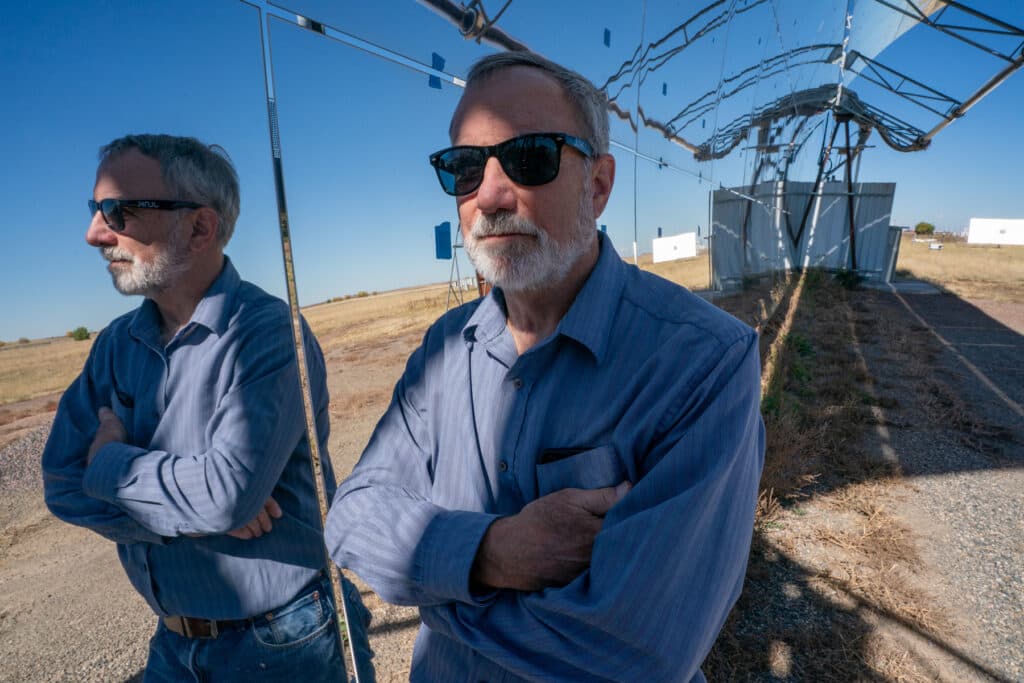
Hart Van Denburg/CPR News
Price’s company, Solar Dynamics, has been testing and improving the technology over the last decade, partly supported by contracts with the federal government, he said.
One project sought to improve how solar power plants collect heat in storage tanks. Those tanks can store heat using “molten salt” at over 1,000 degrees Fahrenheit. But in the past, they’ve developed leaks and failed, sometimes spectacularly, posing a major challenge for the solar industry.
A major plant backed by a DOE loan suffered tank issues and went bankrupt, costing American taxpayers hundreds of millions of dollars.
Gillingham, the Yale professor, said it was not unusual for some DOE projects to stall, or even fail, because other projects may lead to breakthroughs.
“When the government is investing in grants that are competitively awarded, they recognize that some of those grants are not gonna work,” he said.
One of Price’s projects aimed to test how those storage tanks are designed, to understand why they failed and how to fix them. The work is also relevant to “advanced nuclear energy” sites that use molten salt.
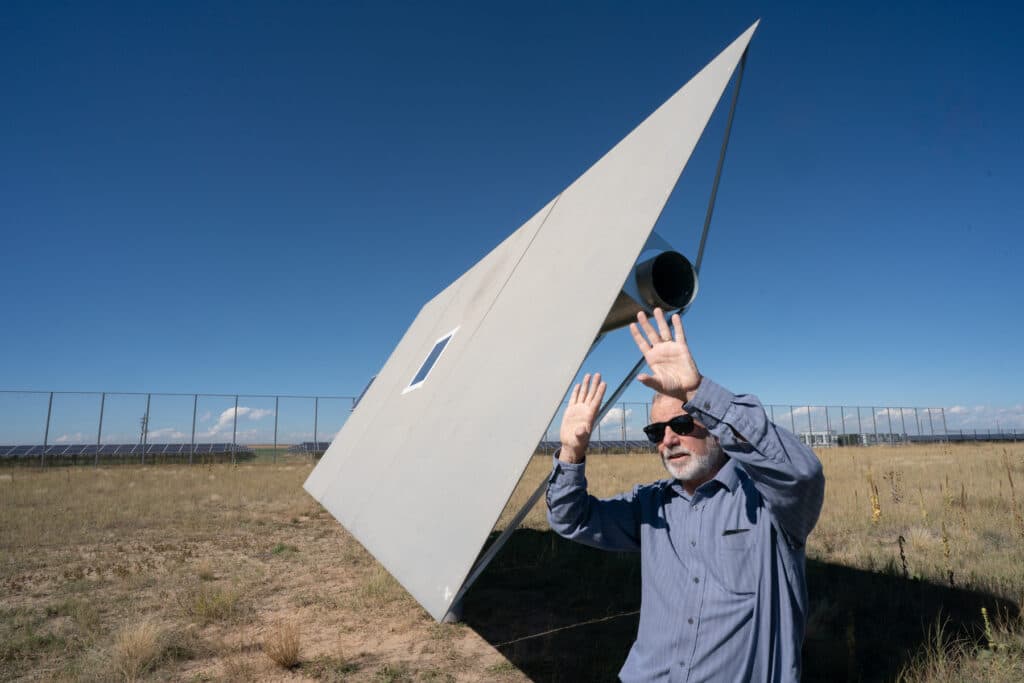
Hart Van Denburg/CPR News
While the Trump administration has expressed outright hostility towards solar power, officials have been bullish about advanced nuclear energy. Secretary Wright’s first secretarial order called for the DOE to prioritize research on advanced nuclear power.
But Price’s grant was canceled for not aligning with the DOE’s priorities, according to his termination letter.
It took Price years to apply for and receive the federal awards, and he just lost his two largest contracts. His company will likely shut down in a few months.
“We’ve had a heck of a ride,” said Patrick Marcotte, Price’s cofounder, who had helped engineer and then build the Sun Beam by hand. “We’ve had a lot of fun doing this stuff, and haven’t given up hope entirely yet.”
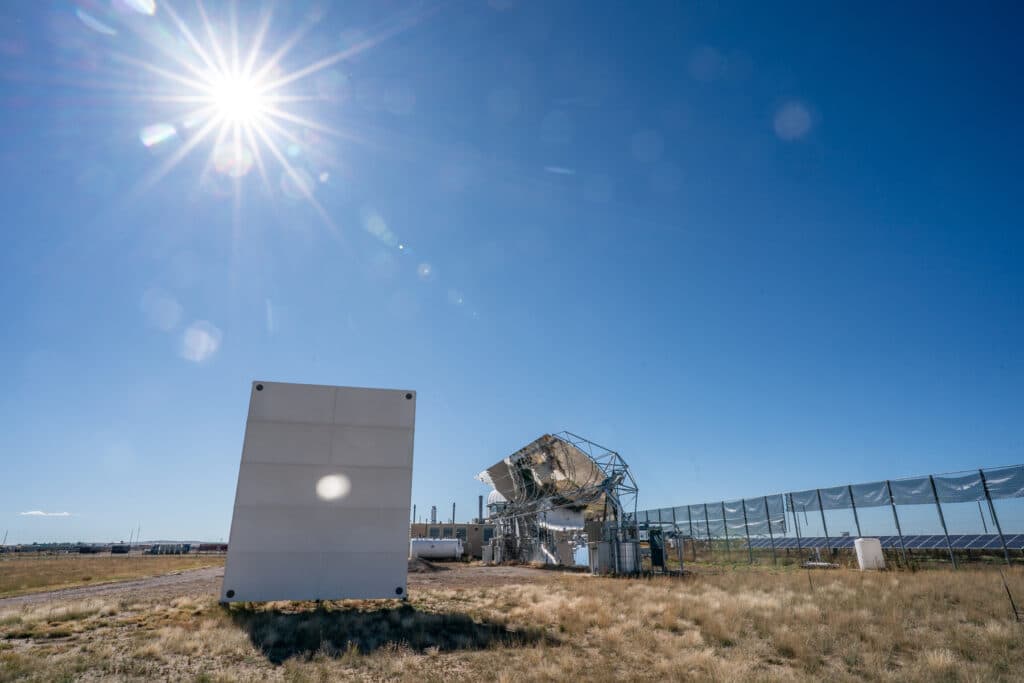
Hart Van Denburg/CPR News
More cuts, and likely lawsuits, coming
Since its initial announcement, the DOE has canceled funding for $700 million in battery and manufacturing projects across the country. Another DOE list claims to show more than $20 billion in cuts, according to E&E News.
Recipients can appeal their grant cancellations, and also sue the government. Jennifer Danis, the federal energy policy director at the Institute for Policy Integrity, a think tank, said these types of lawsuits are “relatively uncharted territory.”
“Across the country, courts are actively grappling with the rapid-fire grant terminations coming from this administration, for non-alignment with new agency priorities and goals,” she said.
In some cases, states are pushing back. Last week, a federal judge issued a ruling preventing the National Oceanic and Atmospheric Administration from terminating several awards issued to Washington state.
“By allowing a change in an administration to upend multi-year grants would cause unnecessary chaos across the vast world of government-supported endeavors undertaken by states, universities, non-profits, and others,” Judge Marsha J. Pechman wrote in her ruling.
Danis said the Trump administration is proving itself an unreliable investment partner by canceling grants on such short notice.
The cancellation of funding for Zimmerle’s CSU lab has left his team urgently seeking new funding. Without it, he’ll have to lay off staff and maybe shut down his facility.
“The damage is done now,” he said. “Success in a court case six months or nine months from now isn’t going to impact what we have to do right now.”

